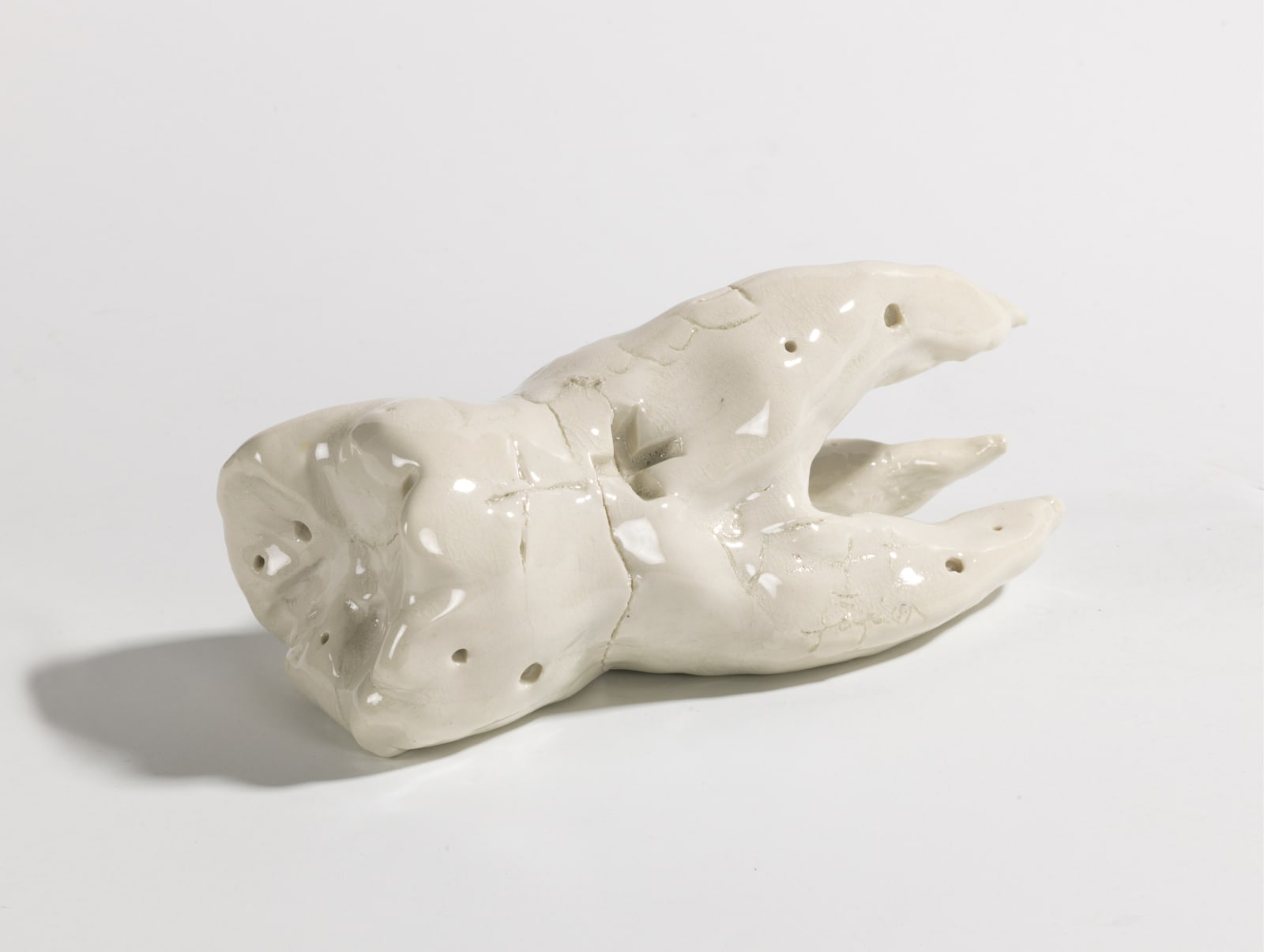Antoni Tàpies
“Art is a symbol, a thing conjuring up reality in our mental image. That is why I don’t see any contradiction between abstract and figurative art.”
—Antoni Tàpies
Antoni Tàpies began producing three-dimensional works with found objects and assemblages in the early 1960s, expanding his vision of art created from materials that evoke both a humble existence and a strong sense of touch. In the 1980s, Tàpies set aside assemblage to focus on ceramics and fireclay. He began this new technique at the ceramic studio of Joan Gardy Artigas, who had previously inspired Joan Miró and Eduardo Chillida to work with fireclay. Later, Tàpies collaborated at the Galerie Lelong studio in Grasse, France, with the assistance of German ceramist Hans Spinner. During the mid-1980s, based in this studio, Tàpies created a series of ceramic sculptures depicting fragments of the human body.
Completed in 1988, 'Queixal' is an oversized human tooth covered with white enamel. The smooth, glossy surface of the porcelain enamel is disrupted by punctures, intentional cracks, handmade marks, and graffiti-like inscriptions of crosses, numbers, and square root symbols—elements of Tàpies’s visual language of codes and signs. Driven by a desire to radically reinvent sculpture, 'Queixal' embodies the Surrealist aim of producing a shocking and enduring effect on the viewer through the mechanism of displacement, removing the element from its familiar context to create a profound psychological association. A few years after the completion of this work, when art critic Jean Frémon asked Tàpies what sculpture is in his book 'La poétique de la matière,' the artist responded: “Why not, for example, thirty kilos of clay shaped into a premolar and hastily covered with white enamel that looks like it’s still dripping?”
The sculptural works Tàpies created in the 1980s, focusing on fragments of the body, are reminiscent of votive figures that serve as philosophical meditations on pain as an intrinsic part of human existence. This is particularly relevant considering that during this period, Tàpies was exposed to the visual information of wars in Iran, Iraq, and Afghanistan, which revived his memories of the Spanish Civil War (1936-1939), a conflict he witnessed and suffered as a 13-year-old boy in Barcelona.
Antoni Tàpies' sculptures are among his most complex and significant contributions to 20th-century art. They have been the subject of important studies, such as Gloria Moure's 'Tàpies. Objects of Time' (1995), and major museum exhibitions, including 'Antoni Tàpies: From Object to Sculpture (1964-2009)' at the Museo Guggenheim Bilbao in 2013-2014.
NOTES
This artwork is accompanied by a photo certificate by Miquel Tàpies, Fundació Antoni Tàpies, Barcelona, dated March 25th, 1993. The sculpture is registered in the artist’s archive under photo number T-6926.
Provenance
Galerie Lelong, ParisGalerie Academia, Salzburg, Vienna
Mario Mauroner Contemporary Art, Salzburg, Vienna
Private collection, Austria
Private collection, United States
Exhibitions
Galerie Academia, Salzburg, 1992, Regards sur la Méditerranée (illustrated in color)
Galerie Academia, Salzburg, 1994, Antoni Tàpies (illustrated in black and white)
Literature
Anna Agustí. Tàpies. Obra Completa / The Complete Works. Vol. 6 (1986-1990). Barcelona: Fundació Antoni Tàpies; Edicions Poligrafa, S.A., 2002, p. 246, cat. no. 5662 (illustrated in black and white).




